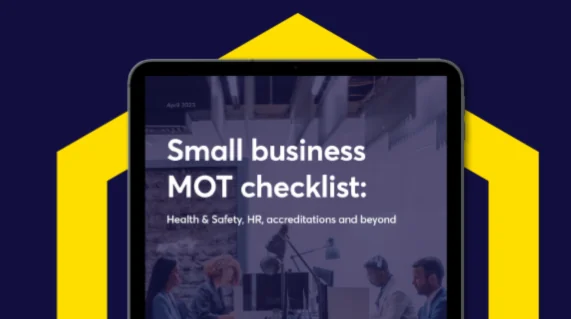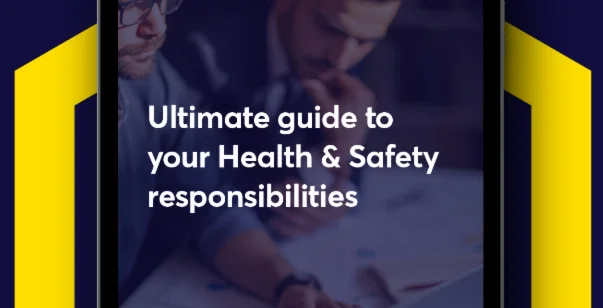In the world of Health & Safety, the Control of Substances Hazardous to Health Regulations 2002 (COSHH) are designed to protect you and your workers from harm posed by hazardous substances. Using chemicals or other hazardous substances can put people’s health at risk, so legally employers have to control exposure to make sure everyone stays healthy.
In this blog, we’ll be exploring the COSHH regulations in detail, including their coverage, the purpose they serve and their impact on businesses just like yours.
What does COSHH cover?
COSHH regulations cover lots of hazardous substances that can potentially compromise the health of your employees. Hazardous substances can be generated in many ways including:
- Singular and mixed chemical substances.
- Fumes and vapours are emitted into the air.
- Dark substances including carcinogens, mutagens, and toxic companions.
- Microscopic biological agents like bacteria and viruses.
- Substances used directly in work activities
- Substances generated during work activities
- Naturally occurring substances
- Biological agents
Hazardous substances can be found in nearly all work environments – including ones you might not expect. Whether you work in a factory, a farm, a construction site, a beauty salon or an office, COSHH regulations are something you’re going to have to think about.
The effects of hazardous substances are varied, but common symptoms include:
- Skin irritation or dermatitis
- Asthma as a result of developing allergies to substances at work
- Losing consciousness as a result of being exposed to fumes
- Cancer, which can appear a long time after exposure to the substance that caused it
- Infection from bacteria and other microorganisms
What is the purpose of COSHH regulations?
COSHH regulations help to keep workers safe from unexpected consequences of exposure to harmful substances. If you don’t control exposure properly, you, your employees or other people might become ill. This could lead to negative consequences for your business including:
- Lost productivity to your business due to staff absenteeism from illness.
- Leaving you liable to enforcement action, including prosecution under the COSHH regulations.
- Civil claims from your employees may be brought against you and your business.
Aside from just staying compliant legally and avoiding hefty fines or prosecutions, there are positive benefits to following COSHH requirements:
- Improved productivity as a result of using more effective controls
- Improved employee morale as a result of championing a safety culture
- Better employee understanding and compliance with Health & Safety requirements
COSHH ACOP revisions
Guess what? COSHH’s rulebook just got a makeover, and it’s all for the better. These updates are like a breath of fresh air, making things clearer and more aligned with the times. The Approved Code of Practice (ACOP) has had a few revisions too. Revisions like these are made to make things clearer and align with any changes to regulations. Here’s the scoop:
It’s important to note that the legal responsibilities that employers have to protect their workers aren’t changed by revised ACOPs. A few specific changes include:
- Taking account of legislative changes, such as the introduction of the EU regulations for the Registration, Evaluation, Authorisation and Restriction of Chemicals and the Classification, Labelling and Packaging of Substances and Mixtures systems.
- Updates to keep up with ongoing changes to technical guidance around COSHH e.g. for local exhaust ventilation (LEV) and health surveillance.
- More clarity was needed around maintenance, examination and testing of control measures and LEV, so it’s now explained that the legal duty to keep up with maintenance is with an employer, not the service provider.
- Guidance around good practice has been tidied up, removed and repositioned in a more relevant way next to regulations or separately on the Health and Safety Executive (HSE) website.
- Specialist language has been simplified where possible.
- Amending information around worker involvement.
What hazards are covered under COSHH regulations?
We’ve already touched on where the hazardous substances that you’re responsible for can come from – but what sorts of things does that include?
You’ll mostly come across products that contain hazardous chemicals in the workplace. Such products could be…
- Paints
- Sealants
- Adhesives
- WD40
- Spirits
- Petrol and oils
- ….and many more
Substances generated by work include…
- Dusts like silica dust, brick dust, construction dust and MDF dust
- Fumes that come from paints, glues and other products
- Vapours, gases and mists
Naturally occurring substances could include…
- Grain dust
- Poultry dust
- Silo and slurry pit gases
Biological agents could include…
- Bacteria
- Fungi
- Viruses and other germs that could cause diseases
There are a few things that COSHH doesn’t apply to. You might notice that asbestos and lead aren’t on the list, and that’s because they have their own regulations you’ll need to comply with. Highly radioactive substances also come under separate legislation – that’s because asbestos, lead and radioactivity are much more hazardous so need more specific requirements.
Biological agents that are outside the employer’s control aren’t the employer’s responsibility either. For example, if someone caught an infection from a colleague, this isn’t a breach of the COSHH regulations.
Comply with COSHH regulations using our handy templates
Over at HS Direct, we’ve got your back. Navigating COSHH regulations might sound a bit complex, but it doesn’t need to be. Meet our COSHH assessment templates – your trusty companions in staying on the right side of the law.
With a library of over 80 templates, there’s bound to be one for the substances you work with, and if not, we’ve even got a blank COSHH template for you to tailor to your own needs. Or if you’re not sure exactly what you need, download our free template to get started right away.
Got questions or need a hand? Get in touch with us on 0114 244 4461 or go to our contact page to request a callback.
Want to explore COSHH in lots more detail? Check out our comprehensive guide below.








